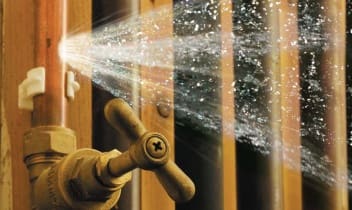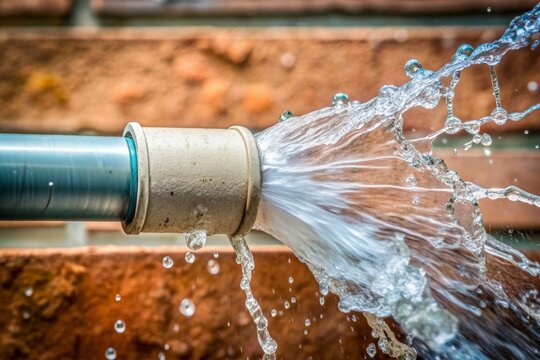Protecting Against Burst Pipes: Crucial Tips to Safeguard Your Plumbing
Preventing ruptured pipes is a critical issue for property owners, specifically during cooler months when the threat of freezing is heightened. Carrying out tactical actions such as proper insulation, regular examinations, and preserving constant indoor temperatures can considerably decrease the chance of pipeline failing. In addition, comprehending emergency procedures outfits homeowners to respond quickly to potential pipes issues. Nonetheless, many are unaware of the particular vulnerabilities that their pipes might face. Exploring these susceptabilities can provide invaluable insights right into guarding your plumbing system effectively.
Understand Pipe Vulnerabilities
Recognizing pipe vulnerabilities is vital for reliable plumbing upkeep and preventing pricey damages. Numerous aspects add to the vulnerability of pipes to ruptureds, including material make-up, age, and environmental problems. Older pipelines, particularly those made from galvanized steel or polybutylene, usually weaken in time, leading to raised danger of leaks and ruptures.
Temperature level changes can likewise significantly influence pipe integrity. In chillier environments, water entraped in pipelines can freeze, increasing and exerting stress on the pipeline wall surfaces, which might eventually bring about a burst. Additionally, high water pressure can stress pipes, particularly at bends and joints, enhancing the likelihood of failing.

Insulate Water Lines Correctly
Correct insulation of pipelines is crucial for protecting against freezing and succeeding bursts during chilly weather (burst pipe). Shielding your plumbing system successfully safeguards against temperature level drops that can lead to pricey damage. Begin by recognizing at risk locations where pipes are subjected to outdoor temperature levels, such as cellars, attic rooms, and outside wall surfaces
Use foam pipeline insulation sleeves or wrap insulation tape around these locations to provide a safety obstacle. Guarantee that all sections of the pipelines, especially those with limited heat direct exposure, receive ample insulation. Pay unique interest to installations and joints, as these are more at risk to cold.
When shielding, it's crucial to select products that satisfy local building ordinance and are appropriate for the particular environment. Fiberglass insulation is frequently suggested for its thermal resistance residential properties. Additionally, take into consideration making use of heat cable televisions or tape in severe conditions, which can be plugged in to provide supplementary heat
On a regular basis check shielded pipelines for any type of indicators of wear or damages, as compromised insulation can diminish its performance. By taking these positive measures, you dramatically decrease the danger of pipe ruptureds, guaranteeing a reliable plumbing system throughout the winter months.
Maintain Regular Temperature Level
A secure interior temperature level is essential for stopping burst pipelines throughout the cold months. When temperature levels decrease, water within pipes can freeze, producing and increasing stress that might inevitably create the pipes to ruptured. To alleviate this threat, home owners should maintain a constant temperature level throughout their living area, ideally no lower than 55 ° F(13 ° C)Making use of a programmable thermostat can aid manage indoor temperature levels effectively, guaranteeing that areas with pipes remain cozy also when your house is empty. Pay special attention to locations that are more at risk to cool, such as attic rooms, cellars, and garages. Keeping cabinet doors open under sinks can additionally enable warmer air from the home to flow around plumbing.
In enhancement, it is sensible to allow taps to drip a little throughout extreme chilly spells. This small circulation of water can avoid cold by reducing stress within the pipes. Additionally, throughout particularly serious weather events, consider briefly suspending any nighttime setbacks on your thermostat to preserve a consistent cozy atmosphere. By executing these strategies, home owners can substantially decrease the threat of pipe bursts and protect their plumbing systems versus the severe winter season components.
Frequently Evaluate Pipes
Regular assessments of pipes systems are crucial for preventing burst pipes and maintaining total home stability. Throughout these examinations, it is crucial to take a look at visible pipes for signs of rust, leakages, or use.
In addition, evaluating joints and links is vital, as these points are usually at risk to leakages. Homeowners should also evaluate water stress levels, as extreme pressure can strain the pipes system and increase the danger of pipe bursts.
Think about scheduling specialist plumbing evaluations at the very least once a year, specifically before winter, to guarantee your read more system is prepared for cooler temperatures. By being aggressive in your method, you can guard your home versus the disruptive and pricey consequences of ruptured pipes.
Know Emergency Situation Procedures
Comprehending emergency situation treatments is vital for every homeowner, especially after conducting normal plumbing inspections. Being prepared for a pipes emergency situation can substantially mitigate damage and conserve costs.
Next, maintain necessary tools useful. A pipes emergency situation kit ought to consist of a wrench, plunger, and towels, as well as a flashlight and a pail for small leaks. Furthermore, take into consideration having the call info for a trusted plumbing technician conveniently offered, needs to the circumstance rise beyond your control.
If you discover a leak or ruptured pipe, quickly switch off the water supply and inform your plumbing. Record the damage with photos for insurance functions. Recognize the signs of prospective plumbing concerns, such as uncommon water pressure fluctuations or damp places on walls
Inevitably, positive knowledge and speedy action are essential in taking care of pipes emergency situations, guaranteeing your home stays safeguarded and minimizing possible damage.

Conclusion
Finally, avoiding burst pipelines demands a multifaceted strategy that consists of understanding pipeline vulnerabilities, correct insulation, keeping constant interior temperatures, normal evaluations, and knowledge of emergency situation treatments. By applying these vital approaches, the threat of pipes failings can be dramatically minimized, thus guaranteeing the durability and effectiveness of the plumbing system. Proactive steps not just secure against potential damages but additionally add to total water conservation and the protection of building.
In colder environments, see page water trapped in pipes can ice read review up, exerting and broadening pressure on the pipeline walls, which might ultimately lead to a ruptured. When temperatures decrease, water within pipes can freeze, producing and increasing pressure that may eventually cause the pipes to ruptured. By carrying out these approaches, property owners can substantially decrease the danger of pipe bursts and guard their pipes systems against the rough wintertime elements.
